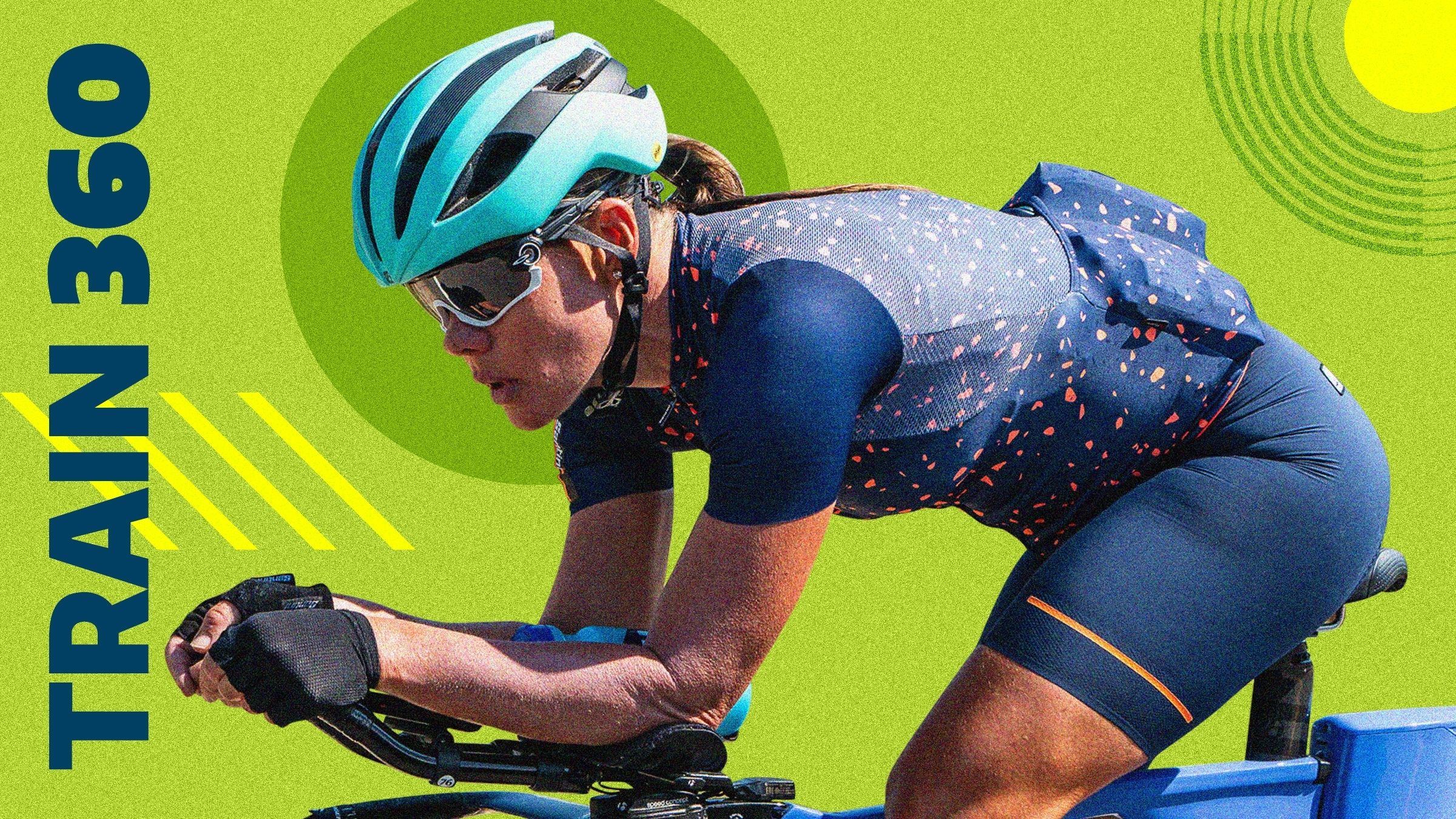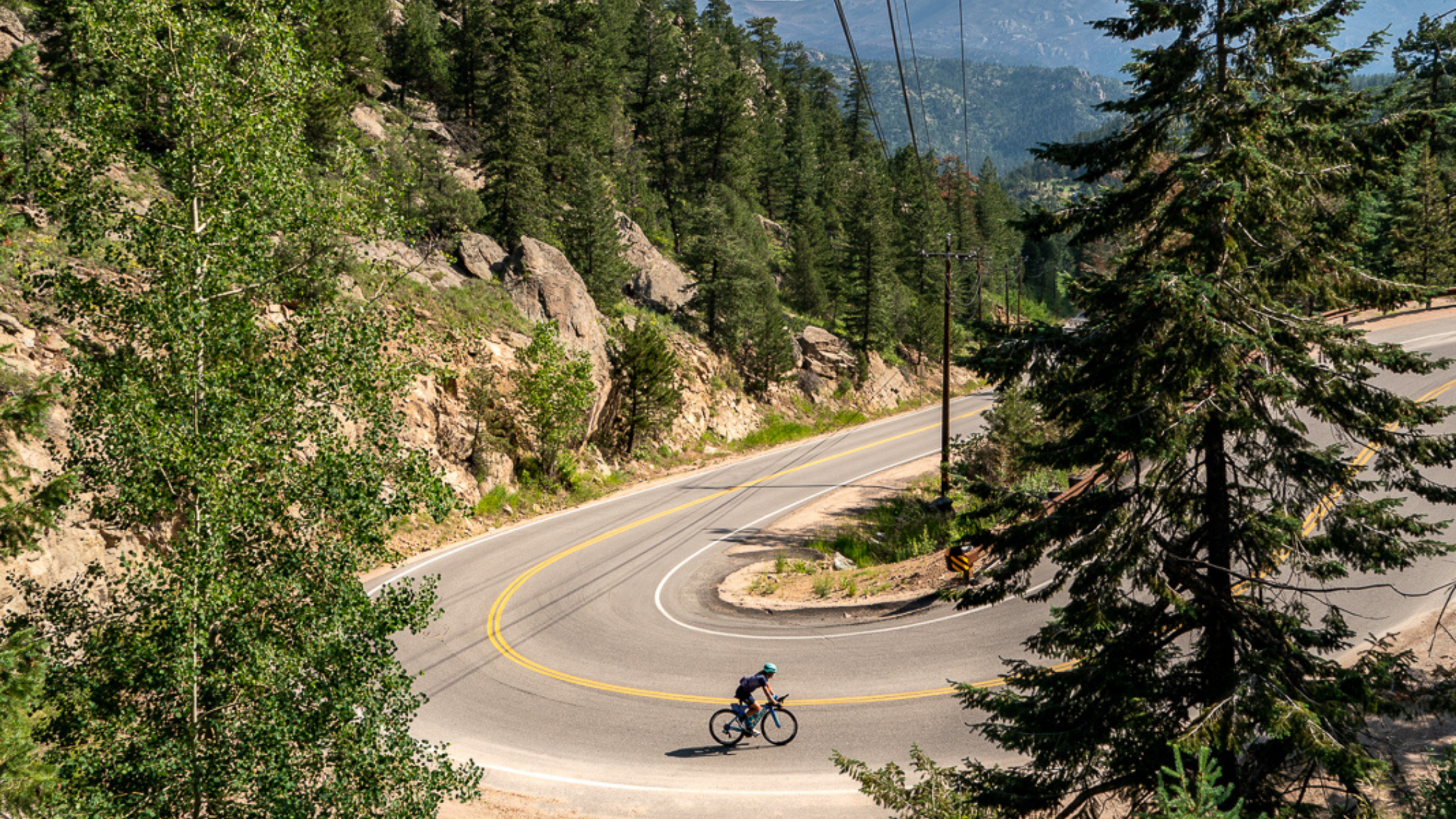Train 360: A Complete Look at Absolutely Everything That Goes Into Mirinda Carfrae's FTP Bike Test

Train 360 is our new training column, designed to give you a deeper look at the many different aspects that go into a professional athlete executing a key workout. A key workout is considered a session that will yield significant fitness gains and is often positioned in a training program so that the athlete can hit it feeling relatively fresh and able to give it their all. As well as the key workout (which is listed in full below), there are many other factors to consider, including: “primer” sessions in the days leading in, activation and mobility exercises beforehand, fueling and nutrition (both before, during, and after the workout), mental preparation, coaching points, and all of the gear and equipment involved. We’ve got it all outlined below—and who better to kick off the series than three-time world champion Mirinda Carfrae…
The Purpose
Carfrae, who is just a week out from her first race of the 2021 season, 70.3 Timberman, said: “The objective of this workout is to get an accurate FTP (Functional Threshold Power) and to see how much it has improved since my last test. We do this once every four to six weeks, as it’s good to see the improvement. This is the second time I’ve done this since having Finn [her second child who was born last December], and my improvement was quite significant.”
Carfrae is coached by former 70.3 world champion turned coach Julie Dibens, whose Boulder-based JD Crew, teams up for a lot of key workouts like this one. Dibens uses the numbers from this test to establish bike training zones, which they’ll periodically reevaluate. “It’s really good to see the progress you’re making from one test to the next, and to see that your training is working for you,” Carfrae said.
She added that this should be done under mostly standard training conditions.“You’re obviously going to be carrying some fatigue from training going into this session, and that’s OK, you’re not supposed to be perfectly rested and tapered, it’s a decent snapshot of where your FTP is, not a perfect race prep.”
The Basics
The workout itself, which Carfrae said can be done indoors on the trainer or outside on the road, involves a 30-minute warm-up of smooth, relaxed riding, followed by a short prep set of 4 x 30 seconds hard, 30 seconds easy, just to get your legs warmed up. There’s then a five-minute easy spin before hitting the main set, which is a 30-minute time trial. The goal is to hold your best possible power for the 30 minutes (if using RPE, Rate of Perceived Exertion, it would be a 9-10/10).
The Boulder-based JD Crew chooses to do this effort on an 8.2-mile climb (up to the mountain town of Jamestown, a popular ride in the Boulder area) which has an average grade of 3% and an elevation gain of just over 1,300ft. (You can check out the Strava segment here—and you might not be surprised to discover that Boulder local and recent Boulder 70.3 winner Sam Long has the KOM.)
After the 30-minute test is over, Carfrae regroups with her teammates, and they then descend and recover for 10 minutes before beginning another climb which is about 40 minutes in duration (up to another mountain town, Ward). This is done at a steady pace (RPE 7/10), which Carfrae described as “not the main part of the session, that’s done, but you’re still working.”
“This workout is designed to give us a benchmark of where Rinny is at,” said Dibens. “Rather than focus purely on power, I have her TT a distance or time so the goal is on speed for power. We do it as a group and stagger the start and then regroup to do the tempo climb together at a conversational pace.”

Train 360: Mirinda Carfrae’s FTP Bike Test
The Workout
30 min. warm-up – smooth, relaxed riding
4 x 30 sec. hard, 30 sec. easy to get legs warmed up
5 min. easy spin
30 min. time trial – the goal is to hold best power for 30 minutes, RPE 9-10/10.
10 min. descend/recover
40 min. climb at tempo effort, RPE 7/10
The Day Before
Morning run as normal
Hard swim, covering 5-6,000 yards
Gym – mobility, activation, and strength work
Carfrae said: “There are no alterations to these workouts, the only session that’s modified is the bike workout (see below), which is easier than usual in preparation for the next day. It’s a primer to open the legs for the next day.“
One-Hour Bike Primer Workout:
20 min. warm-up
6 x 40 sec on/20 off
5 min. easy spin
6 x 30 sec. on/30 sec. off
5 min. easy spin
6 x 20 sec. on/40 sec. off
Cool down to the hour
The 40-second, 30-second, and 20-second efforts are all done at best effort power.
Gear
- Trek Speed Concept
- Zipp Firecrest 303 clinchers (training wheels) with Continental GP4000 tires
- SRAM Red Etap AXS 1x50T front ring & 10/33 casette
- Xlab Torpedo Versa 500 front bottle mount
- XLab Chimp carbon cages
- ISM saddle PN 2.1
Fuel
“I do this workout first thing in the morning so I should still be well fueled from the night before—I make sure to have a good dinner the night before.
“In the morning pre-ride I’ll have an energy bar and/or a piece of toast, then once out on the bike I have a Gu gel (cola flavor, caffeinated) right before starting the 30-second prep efforts. I have three bottles on the bike with me—one with water, one with Gu electrolyte drink, and one with Gu Roctane, grape flavor (this has 240 calories in it and 59g of carbs). I’ll have a second gel on that last part of the workout, the final 40-minute climb.”
Mental Focus Points
“I approach this workout in a very similar way to when I race. I’ll have some technical cues, like how I’m pedaling or riding, but my mental focus is more specifically on my breathing. If I’m focused on my breathing it helps me stay focused on what I’m doing, to stay in the moment, not to start thinking too far ahead. I never want to be thinking ‘two minutes down, 28 to go.’ When I stay focused on my breath, I stay focused on my effort in the moment and that gets me the best outcome.”
Solo or Group?
“I don’t mind doing this workout alone or with others. We did the latest one as a group, with a minute spacing each of us, which adds a bit of a race dynamic to it—you might be working to chase someone ahead of you or you might be getting chased.”
Pre-Ride Mobility
“I do a few exercises that help me switch on and activate my glutes—such as side lunges and single leg squats.”
Post-Session Activities
“My first priority after getting off the bike is to breast feed Finn, and then I’ll do a 30-minute run off the bike, nothing special. It’s just good to get the body used to running, especially off a hard ride like this—and then it’s all about recovery.”
Recovery
“I’ll do a recovery shake so I’m getting some carbs and protein in right away. In an ideal world I’d put on my NormaTecs and nap, but in reality I get home and have two little people, Izzy and Finn, who want my attention, so my recovery is definitely less focused now—which I’m sure a lot of people can identify with.
“My advice to other parents who are training is if you can only do one thing post-workout, I’d recommend you really make sure you get in some good food in that 20-30 minutes after finishing the session. I grab something while playing with the kids, and now I’ve trained my kids to take a family nap after we’re done playing!”